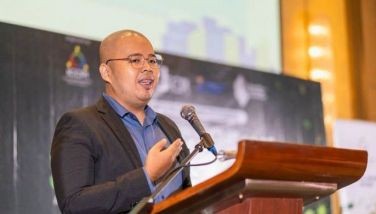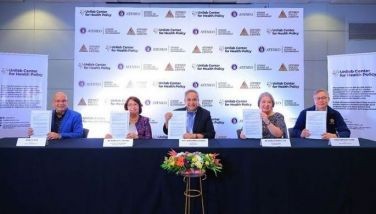Light in the heart of darkness
CHRISTCHURCH – Last Saturday night the “red zone” in this New Zealand city – the scene of death and destruction from a powerful earthquake in February 2011 – came alive with a festival of lights.
The crowd was so large it felt like all the people in the Canterbury region had turned out for “Luxcity” (City of Light), the kickoff event for the world’s first Festival of Transitional Architecture or FESTA.
Architecture students from around New Zealand used laser beams, balloons, projectors and other lighting effects mounted on large-scale demolition machinery to create pop-up cafes and other ephemeral shows. It brought ethereal beauty to a city center that remains cordoned off, with dark and empty buildings in various stages of destruction or demolition.
After inching my way through the dense crowd, past a hotel that one Cantabrian said was the tallest structure left standing after the quake, I gave up and started walking out of the red zone.
News reports yesterday said it was the first time that Cantabrians, traumatized by the quake, returned in such numbers to the city center. An emcee at Luxcity said the exhibit “brings light to the heart of darkness.”
The magnitude 6.3 earthquake left 185 people dead. In a country with a population of only 4.4 million, that death toll is grievous. The city also lost much of its heritage – buildings built in the mid-18th century, including its landmark, the Anglicans’ ChristChurch Cathedral.
Among the fatalities were 11 Filipinos. And Filipinos are among thousands of foreign workers who are now being recruited for a massive rebuilding of a city that has managed to retain much of its beauty amid so much destruction.
* * *
Filipino businessmen may also want to participate in the rebuilding. Peter Townsend, chief executive of the Canterbury Employers’ Chamber of Commerce, told me in Wellington that $2.4 billion worth of infrastructure must be replaced. He estimates that this will add one percent to New Zealand’s annual GDP for the next three years.
“This is a big opportunity,” he told me. “This is such an enormous event for New Zealand… we have suffered the pain, we have incurred the cost… we now have to realize the gain.”
The numbers seem to bear out Townsend’s gung-ho attitude: a news report yesterday said the economy of South Island, where Christchurch and the Canterbury region are located, is growing at 3.3 percent – its fastest pace in eight years – thanks largely to the start of reconstruction in this quake-devastated city.
About 1,600 buildings and 15,000 houses were destroyed and 30,000 more homes incurred damage in excess of $100,000. Townsend estimates that 80 percent of Christchurch needs to be rebuilt, with 20,000 additional skilled workers needed.
“The trick is how we recreate a city that will ride the great tailwinds of our time, not the tailwinds of yesterday,” he told me. “We’re going somewhere new.”
This is where Cantabrians disagree. Townsend told me he was pretty sure ChristChurch Cathedral would be replaced with something new rather than restored – a scheme that the Anglican Church itself prefers.
Residents who want to preserve their city’s heritage sites, however, have turned to New Zealand’s High Court to preserve the neo-Gothic church. The case was filed by former members of parliament Jim Anderton and Philip Burdon, who co-chair the Great Christchurch Buildings Trust.
In a recent article, Anderton and Burdon wrote, “The trust recognizes the immense significance of the symbol of the cathedral for all of us. It is the outstanding feature for most residents and visitors. It is the image of the city. It is the center of the city. It is the heart of the people.”
So far, those for restoration appear to be losing the battle. Earlier this month, police shooed away an architect who sat between an excavator and what was left of the Cranmer Courts in a final attempt to stop the demolition of the 136-year-old edifice. The structure came down.
Townsend sniffs at the protests. “Everyone wants to save everything but no one wants to pay for it.”
* * *
Also slow in paying are insurance companies. Residents complain about the slowness of the processing of insurance claims and the rebuilding itself, with one describing it as “unacceptably slow.”
Burdon and his wife still cannot use their condominium unit in the city because it remains classified as unsafe. They are lucky to have another home outside the city – a villa surrounded by an English garden, nestled amid land they have leased out to sheep and cattle farms. When I visited the estate last Saturday together with Rebecca Palmer of Asia New Zealand Foundation, the garden was bursting with rhododendrons, azaleas and other blossoms of spring.
Other people with modest means, however, are suffering from the housing shortage, as structural engineers and insurers alike wait for the ground to stop shaking before deciding to preserve, reinforce or destroy buildings and pay insurance. Townsend estimates the insurance cost to reach $40 billion – the fourth highest in the world, he says, since 1971. There are reports of fraudulent claims and landlords abusing tenants.
Christchurch has suffered from about 11,000 aftershocks since February 2011, with about 50 of them registering above 5 in the Richter scale. Two powerful aftershocks caused further destruction to the ChristChurch Cathedral.
There is such a shortage of accommodations in the city that I was lucky to be billeted in a comfortable motel on Labor Day weekend (plus FESTA on Saturday).
Thousands of residents left the city after the quake and amid the aftershocks; many have not returned. Damaged houses still stand empty, their gardens overgrown. It is fascinating to see a prosperous country renowned for efficiency faltering in disaster response.
Burdon groused to us that those in charge of recovery efforts have become too risk-averse, worried by the consequences of another powerful earthquake, wanting to get it right but in the process causing further suffering.
Again, Townsend prefers to look on the bright side. The reconstruction is underway, he points out, with 96 road crews of about 20 people each at work. A citizen watch is on to prevent corruption in rebuilding deals. And residents are being encouraged to turn to earthquake-resilient homes, dubbed the “Cantabrian,” with lightweight materials, stronger foundations and regular floor shapes.
“It’s about positive economic growth,” Townsend told me. “It’s an opportunity we’ve never seen in New Zealand before.”
- Latest
- Trending
























